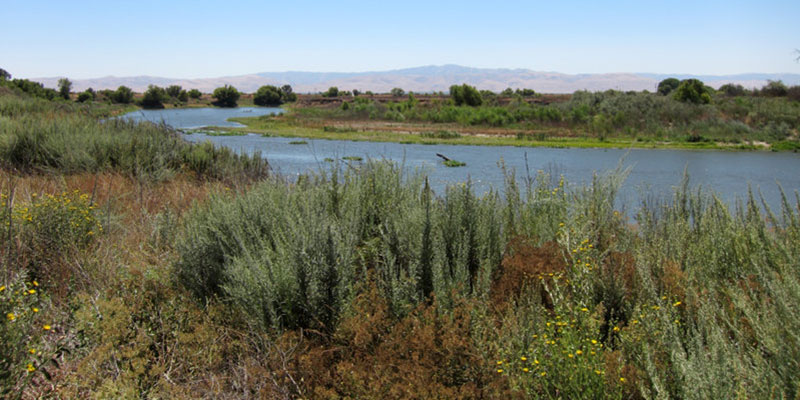The San Joaquin Valley, which now experiences ill effects from overpumping groundwater, could benefit from underground water storage projects.
Policy report puts an emphasis on nontraditional sources like desalinated and recycled water
Despite their dissimilarities, the people and economies of California’s San Joaquin Valley and the major cities of Southern California are inextricably linked by their reliance on the same water resources, and they share an interest in protecting them to secure a future supply of dependable, affordable water.
In a recent report, “Water Partnerships between Cities and Farms in Southern California and the San Joaquin Valley,” the Public Policy Institute of California (PPIC) detailed how the two regions can find a way forward by sharing water infrastructure, and developing and managing water supplies together.
Creating Opportunities for Partnership
Now, California’s cities are experiencing relatively normal and wet years, but drought remains a concern in the long term.
In contrast, the Valley is currently suffering from aquifer overpumping, leaving farmers with diminishing water resources. As a result, there’s a growing interest in water supply expansion and groundwater sustainability in the Valley through large, underground water storage projects.
Partnerships between municipalities and growers could give water managers more agility to respond to changing conditions, relieving groundwater demand in the Valley while increasing drought resilience in cities by exchanging water between urban and agricultural regions when and where it’s needed at a reasonable cost. The report explained:
The valley’s long-term overdraft problem could be eased by increasing average annual water availability. If San Joaquin Valley water agencies manage aquifers well, groundwater can replace some surface water during droughts. Meanwhile, coastal cities might be willing to exchange some of their average long-term supplies if they can access increased supplies during droughts. If these parties act separately, there’s a risk that cities will over-invest in supplies that they might only need on a few occasions. Partnerships that encourage flexibility, where cities and farms share water, can benefit both parties.
One important takeaway of the report is that nontraditional water sources, including desalination and, particularly, wastewater recycling, will be major sources of new water supplies.
Focus on Nontraditional Water Sources
The PPIC report notes that between 1998 and 2015, 10% percent of the water for the South Coast Hydrologic Region, which encompasses Santa Cruz, Monterrey, San Luis Obispo, and Santa Barbara, came from water reuse and recycling. It also states:
The water supply mix of urban areas has also evolved […] In addition to expanding their surface and underground storage and conveyance systems, urban agencies have invested in recycled water, stormwater capture, and desalinated seawater and brackish groundwater. Over the past two decades, these alternative sources have provided roughly 20 percent of Southern California’s water supply, and they have been growing rapidly.
This growing focus on nontraditional water sources is the key to increasing the flexibility needed for solutions discussed in the report, as well as other approaches like decentralized water treatment.
Modular Treatment and Decentralization
California is hardly alone in its challenges and opportunities for urban-agricultural partnerships. Cities and agriculture throughout the Western United States are negotiating how to share river basins and aquifers, but the report also holds value for regions around the world.
While California’s water infrastructure has historically focused on large-scale centralized projects, strategically placed smaller plants offer a number of advantages. Even in China, where large-scale projects like the Three Gorges Dam dominate, decentralized projects are proving their worth.
Advances in modular water and wastewater treatment now provide agile options for decentralization, which brings treatment where it’s needed, from remote agricultural regions to urban or industrial settings. One advantage of modular treatment is it makes decentralization viable at virtually any scale.
How Fluence Can Help
A number of Fluence products are ready to serve urban-agricultural partnerships in California and the world.
Fluence’s Aspiral™ wastewater treatment units are based on membrane aerated biofilm reactor (MABR) technology, which meets California’s strict Title 22 regulations for agricultural wastewater reuse. Water treated with AspiralTM also exceeds China’s Class 1A standard.
The NIROBOX™ family of reverse osmosis (RO) units provide desalination of seawater or brackish water, as well as surface and groundwater purification.
Both Aspiral™ and NIROBOX™ plants feature:
- Energy-efficiency technology
- Low-noise, low-odor operation for close quarters, tourist areas, and environmentally sensitive areas
- Remote monitoring and operations suitable for nonspecialized personnel
- Packaging in rugged, steel shipping containers for easy transport and installation
- The smallest footprint in the business
- BOOT and BOO model financing for infrastructure with no upfront cost.
MABR treatment is also available for updating existing activated sludge wastewater treatment plants with Fluence’s SUBRE. By submerging towers of MABR units in existing basins, operators can increase capacity and improve water quality on the same footprint.
Fluence offers world-class equipment and 30 years of experience that help cities and agriculture work together for a win-win solution. Contact our experts to discuss how our solutions can meet your unique water needs.

